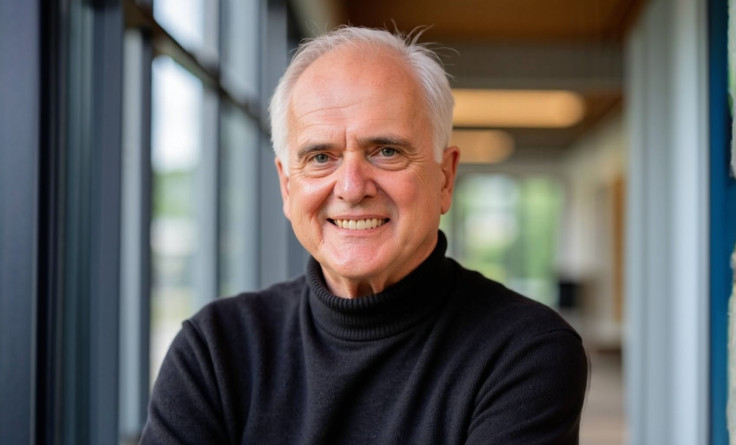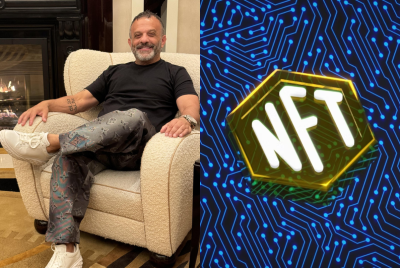Transforming Businesses with Accelerated Wisdom: Stephen Parry on What it Takes to Deliver True Customer Value
Why Traditional Business Models Are Failing — And How Adaptive Thinking Is Helping Companies Thrive in a Constantly Changing World

Change and turmoil are the only constants in today's business landscape, urging companies that want to stay ahead of the curve to adopt innovative approaches. Though the need for novelty is evident, 90% of businesses struggle to adapt quickly to market shifts. Many even elevate operations with AI, IoT, and other technologies, driven by the same objectives that their foundation was built on. For traditional businesses, returning to traditional ways is a natural response. But in a climate evolving week by week, enhancing tradition is no longer enough.
According to Stephen Parry, an Adaptive Business Architect with more than 30 years of experience, this reality calls for more than innovation; it requires a systemic mindset, skill, and competency shift. 'Traditional organisations are usually built on traditional industrial models based on manufacturing. Make something, train your salespeople, and sell the product. What that creates is a measurement system based on gains and efficiency,' he says. 'Instead, they should focus on effectiveness.'
Beyond reaping the benefits of transformation themselves, businesses that adapt will also be able to serve their customers better. Flexible companies can meet clients' goals more effectively, which translates into increased customer satisfaction, an improved sense of trust, and a more personalised problem-solving experience. In today's saturated era, where customers can choose what suits their objectives best, it's imperative to do what it takes to serve their needs.
Parry recognises that adapting today is difficult amid continuous change, increasing customer expectations, and pressures from regulatory bodies. In 2012, he answered the desperate needs of struggling businesses by establishing Sense and Adapt Academy, home to adaptive business thinking, education, and consulting. Here, he doesn't only transform the way companies operate; he transforms the very way change is embraced.
Sense and Adapt

Having created tens of breakthrough adaptive organisations prepared to face rapid shifts with confidence and clarity, Parry offers a nuanced approach rooted in what he calls 'accelerated wisdom.' It comes from years of firsthand experiences, thousands of perused books, and his trial and error.
Parry rewrites the 'make and sell' model with a proprietary Sense and Adapt design. While the first defines itself by offered products and services, organisations operating with the second blueprint are about the value they create for customer groups. 'That unlocks a certain kind of freedom,' stresses Parry. 'Instead of limiting themselves to products that are popular and in demand, these businesses can get ahead in emerging niches.'
He highlights the common disparity between efficiency and effectiveness. While many owners leverage technology for its speed, Parry urges them to explore cutting-edge solutions from a customer-centric lens. 'With data-driven insights processed by AI, businesses can gain more than efficiency; they can understand what novelties their customers are seeking – and then be the first ones to deliver.'
Parry explores this mindset shift from mastering continuous improvement to mastering continuous change in Sense and Respond: The Journey to Customer Purpose. His work, beyond academia, is informed by personal experiences. To illustrate, he recounts the story of a high-tech company with exorbitant turnover rates:
'It was a complex job. Employees were leaving, and originally happy customers found that the technology no longer met their needs. Initially, they started asking customers, ordinary people outside the tech realm, for advice. Clearly, the support they offered wasn't what they wanted, but the next steps were unclear. Instead of offering on-demand service, we implemented coaching. Before issues arose, they were already guiding customers to satisfaction. I remember walking up to a young, 20-something employee and asking her if the method was working. She said: "I can't tell the difference in numbers, but I know it's making a difference." When I asked her how, she added, 'Because I no longer go home and cry at night!'
As Parry emphasises, this is only one of many risks of designing jobs in the name of efficiency instead of effectiveness. Reinvention in today's world is no longer an option or a mere challenge; it's a core competency. That requires replacing the old with the new: big-picture collaboration, different measurement systems, and rapid change based on careful consideration.
'Most of the systems and processes to manage people are already here. What we're looking for is enhancement,' he adds. And while core transformation, according to Parry, requires a prompt response, he warns against introducing new technologies and models simultaneously. The accepted practices of agility are also in need of reinterpretation. He says the current meaning is still rooted in the old 'make and sell' model.
This model focuses on perfecting product specifications to increase velocity and time-to-market. 'By the time your product is ready, customer demands will have changed,' he explains.
Parry creates spaces for innovation and change through the Sense and Adapt Academy, building them through the business (not the solution) prism. At the heart of this philosophy is looking at the big picture by engaging all organisational levels in a unified goal. This ignites human collaboration but on a much bigger scale. Parry also works with the bottom line in mind. By combining the elements of Sense and Adapt, he aims to reduce companies' costs on work (efficiency) but never on value (effectiveness).
'The word sense is vital here. You need to sense what is needed, what the issue is, and what changes must be made to adapt without compromising your values and vision,' he reflects. 'At the end of the day, your employees focus on the traditional goals. However, we need to challenge these goals. For many, it's like standing in front of a mountain of diamonds while digging for gold. Your people know where the diamonds are, and given the right incentives and goals, they can turn these rough diamonds into valuable jewels. To achieve that, you must change how you think about value and customer effectiveness.'
© Copyright IBTimes 2025. All rights reserved.





















